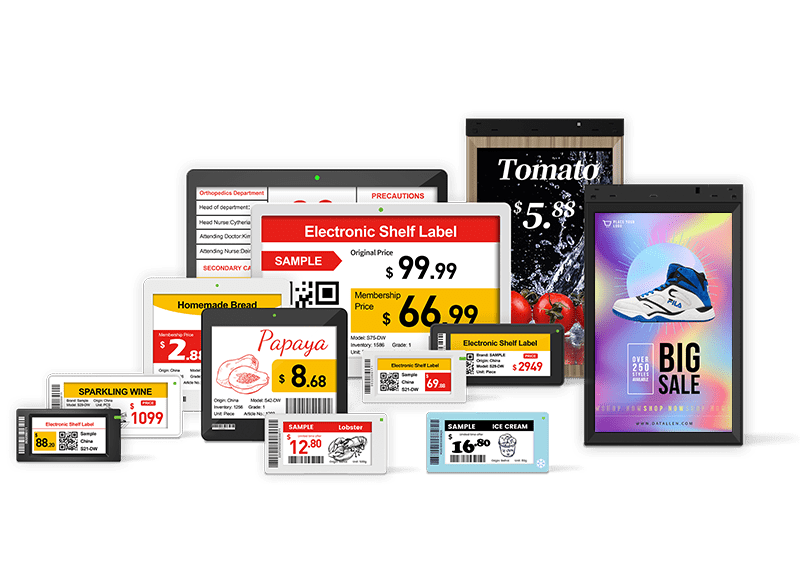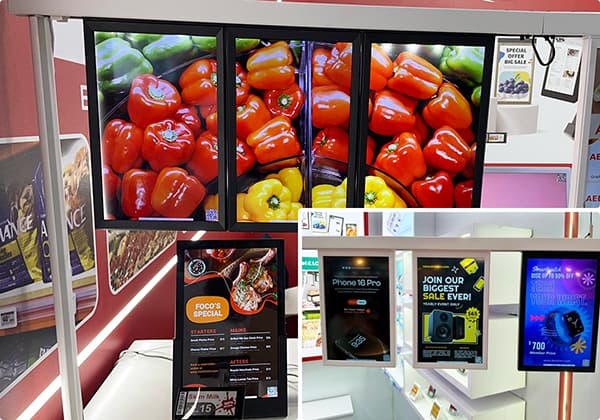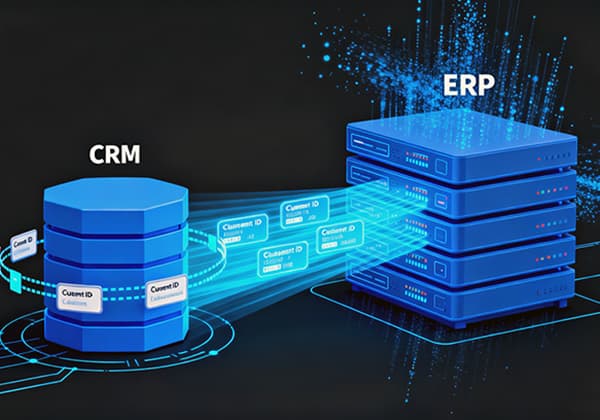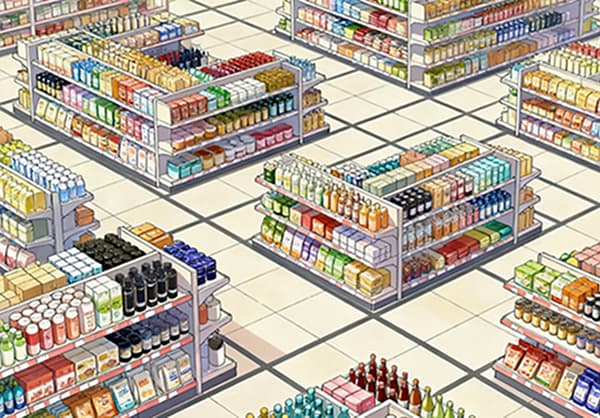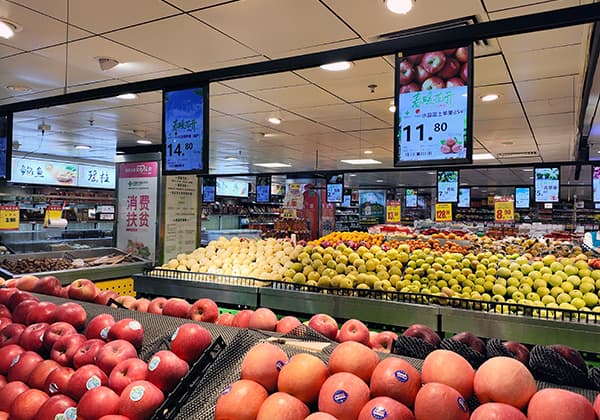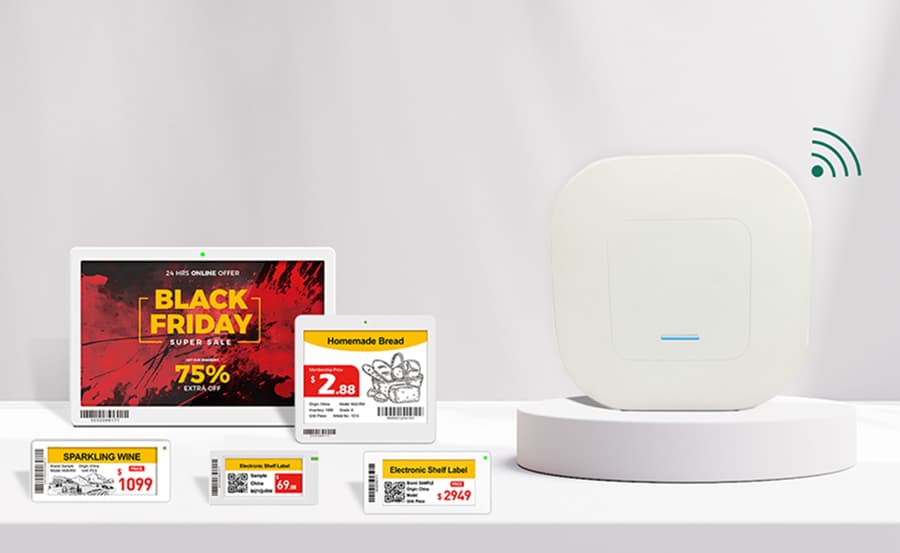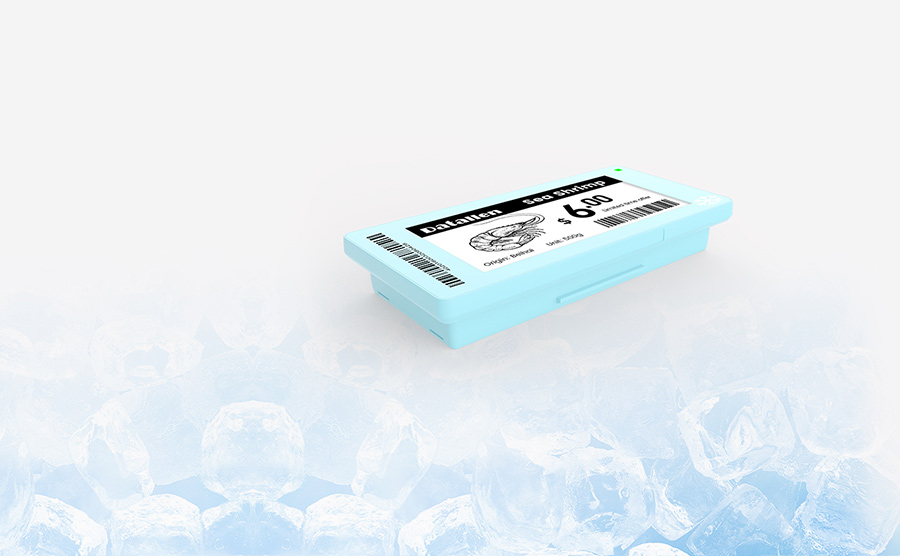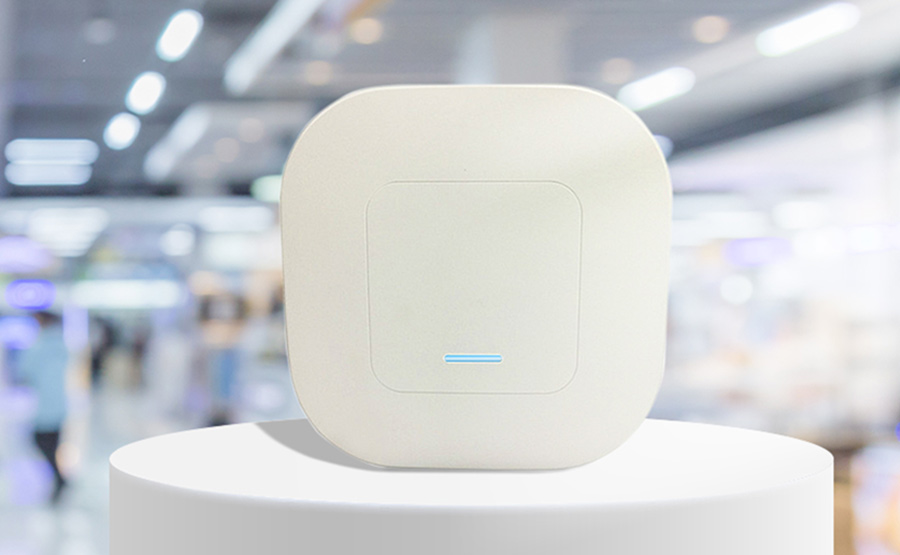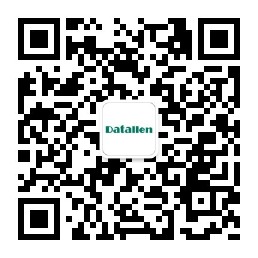From $0.01 paper tags to digital displays—product labels shape customer trust, operational efficiency, and sustainability. Whether you’re a supermarket chain or a boutique retailer, understanding the types of labels available can transform how you manage inventory, communicate with shoppers, and drive sales.
This guide breaks down key label categories, with a focus on Datallen’s innovative electronic shelf label solutions.
Traditional Product Labels: Basics and Beyond
A. Material-Based Classification
- Paper Labels
- Uses: Short-term promotions, small batches (e.g., farmers’ markets, artisanal goods).
- Pros: Low cost, easy to print on demand.
- Cons: Prone to fading, water damage, and manual errors.
- Price: $0.01–$0.50 per label (bulk).
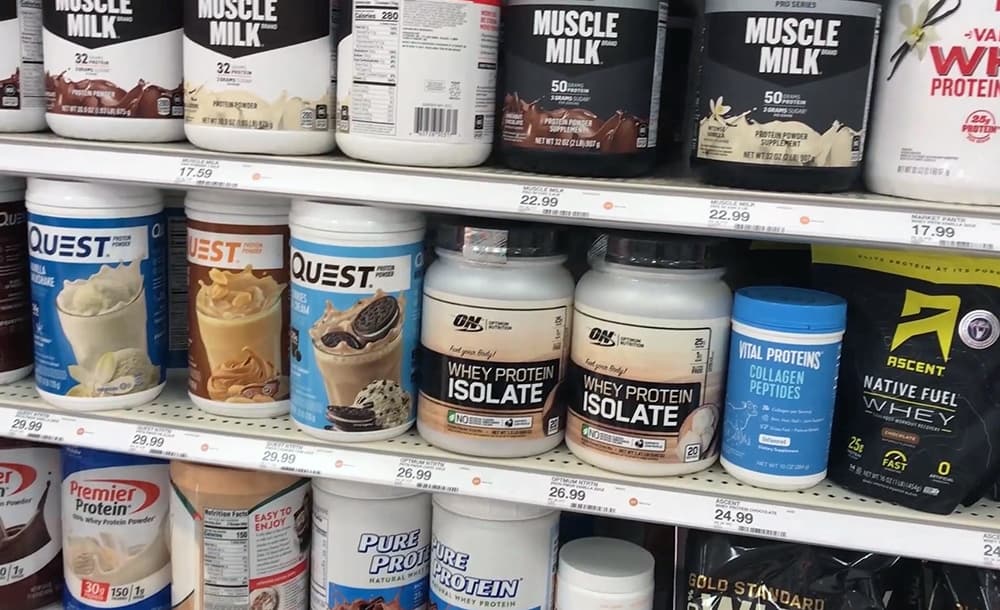
- Plastic/PVC Labels
- Uses: Durable goods (e.g., electronics, hardware), outdoor products.
- Pros: Waterproof, tear-resistant.
- Cons: Non-biodegradable, limited design flexibility.
- Price: $0.10–$2 per label.
- Metal/foil Labels
- Uses: Luxury products (e.g., premium cosmetics, gourmet foods).
- Pros: Premium aesthetic, scratch-resistant.
- Cons: High cost, inflexible for updates.
- Price: $1–$5+ per label.
B. Function-Based Classification
- Brand Labels
- Purpose: Highlight brand identity (logos, colors).
- Application Scenario: Apparel, cosmetics, and packaged foods.
- Considerations: Ensure alignment with brand guidelines; avoid overcrowding with info.
- Informative Labels
- Purpose: Legal compliance (ingredients, nutrition, expiry dates).
- Application Scenario: Food, pharmaceuticals, and personal care.
- Considerations: Font size and clarity for readability; regulatory adherence.
- Warning Labels
- Purpose: Safety alerts (e.g., allergens, flammability).
- Application Scenario: Household chemicals, toys, and electronics.
- Considerations: High-contrast design; placement for visibility.
Electronic Product Labels: The Future of Retail
- Best For: Dynamic pricing, inventory tracking, omnichannel retail.
A. Electronic Shelf Labels (ESLs)
- E Ink ESLs
- Technology: Low-power electrophoretic display (paper-like appearance).
- Uses: Static pricing in supermarkets, pharmacies, and warehouses.
- Pros: Ultra-low power, sunlight-readable, high contrast.
- Cons: Limited color (most models offer 2–4 colors).
- Price: $5–$20 per tag (size-dependent; Datallen offers competitive bulk pricing).
- Datallen Advantage:
5-Year Battery Life: Reduces maintenance costs by 70%.
Seamless Inventory Control: Manage your stock effortlessly, no matter where you are or what time it is.
Tailored Display Options: Enhance your presentations with customizable templates supporting QR codes, imagery, and color accents.
Cedar Series: Waterproof and freeze-resistant (-20°C), ideal for fresh/frozen sections.
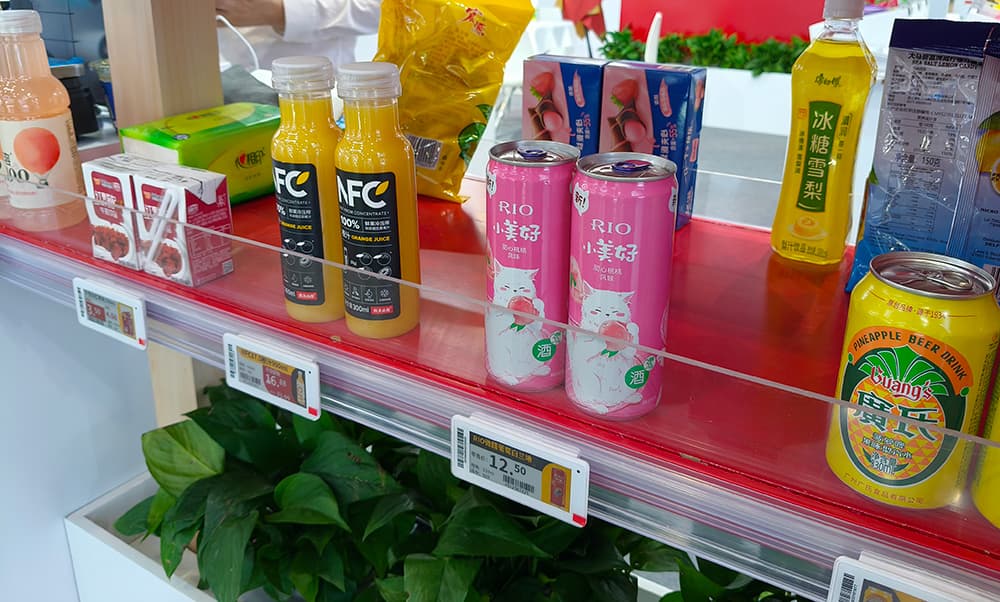
- LCD ESLs
- Technology: Full-color liquid crystal display.
- Uses: Dynamic promotions, video tutorials, and interactive content.
- Pros: Vibrant visuals, real-time updates, scalable for multi-store chains.
- Cons: Higher power consumption; requires stable Wi-Fi.
- Price: $50–$200+ per unit (includes software integration).
- Datallen Advantage:
LCD Digital Signage: Remote-controlled via cloud platform; supports HD videos and QR codes.
Quick Deployment: Install in hours without disrupting operations.
B. RFID Labels
- Technology: Radio-frequency identification for inventory tracking.
- Uses: High-value items (e.g., luxury watches, electronics), warehouse management.
- Pros: Automatic data capture reduces manual counting errors.
- Cons: Requires dedicated readers; higher upfront cost.
- Price: $1–$10 per tag (excluding hardware).
C. LED Labels
- Technology: Light-emitting diodes for attention-grabbing alerts.
- Uses: Flash sales, limited-time offers (e.g., “Sale!” indicators in hypermarkets).
- Pros: Instant visual impact, low energy use for short bursts.
- Cons: Limited text capacity; best for simple messages.
- Price: $10–$50 per label.
Comparison of Electronic Shelf Labels, RFID Tags, and LED Labels
Feature | Electronic Shelf Labels | RFID Tags | LED Labels |
Display Capability | ✅ (E-Ink or LCD) | ❌ (No display) | ✅ (LED screen) |
Communication Method | Wireless (RF / Bluetooth / Wi-Fi) | Radio-frequency identification | Wired or wireless |
Main Functions | Real-time price updates, information display | Item tracking, inventory management | Dynamic content, promotional attraction |
Power Consumption | Low | Low to medium | High |
Ideal Use Cases | Retail stores, pharmacies, etc. | Warehousing, logistics, and high-value goods | Malls, exhibitions, promotional zones |
Key Considerations When Choosing Product Labels
A. Operational Needs
- Updatability:
- Traditional labels: Time-consuming manual changes (avoid for high-turnover items).
- Electronic labels: Instant updates via software (e.g., Datallen’s cloud platform reduces price-change errors by 95%).
- Environment:
- High-moisture/freeze zones: Prioritize waterproof ESLs (e.g., Datallen’s Cedar Series ESL).
- High-traffic areas: Opt for durable LCD or LED labels.
B. Scalability and Integration
- Multi-Store Chains: Cloud-based ESL systems enable centralized management across locations.
- ERP/POS Integration: Ensure labels sync with existing systems.
C. Budget vs. Long-Term ROI
- Short-Term: Traditional labels suit small budgets but incur hidden costs (labor, waste).
- Long-Term: Electronic labels offer payback in 1–3 years via efficiency gains.
Why Datallen Leads in Electronic Label Solutions
- 18 Years of Expertise: Pioneering wireless technology for retail efficiency.
- Tailored Solutions:
Gourmet Groceries: Cedar Series for frozen goods + LCD signage for recipe demos.
Fashion Retail: Interactive ESLs with QR codes for fabric details.
- Sustainability: Paperless ESLs reduce carbon footprint by 80%.
- Global Support: 24/7 technical assistance and SDKs for custom integrations.
Pricing Comparison at a Glance
| Label Type | Initial Cost | Maintenance Cost | Lifespan |
| Paper Labels | Low ($0.01–$0.50) | High (frequent reprinting) | 1–3 months |
| E Ink ESLs | Medium ($5–$20) | Low (battery replacement every 5 years) | 5+ years |
| LCD ESLs | High ($100–$200+) | Medium (software updates) | -10 years |
Elevate Your Retail Experience
Traditional labels serve a purpose, but electronic labels like Datallen’s ESLs are the key to future-proofing your business. Whether you need freeze-resistant tags for a fresh food area or dynamic LCD displays for promotions, our solutions combine innovation with practicality.
Ready to transform your shelves? [Contact Datallen today] for a demo and discover how our electronic labels can boost efficiency, reduce costs, and engage shoppers like never before.
For more insights, check out:
1. What Makes a Smart Pharmacy Better with E Ink Price Tag?
2. Top Retail Dynamic Pricing Strategy Examples and Best Practices
3. Creative Digital Price Tag Ideas for Modern Supermarket Shelving
4. Creative Gift Store Display Ideas for Maximum Impact
5. How Much Will Electronic Shelf Labels Cost Your Business? What You Should Expect to Pay in 2025

